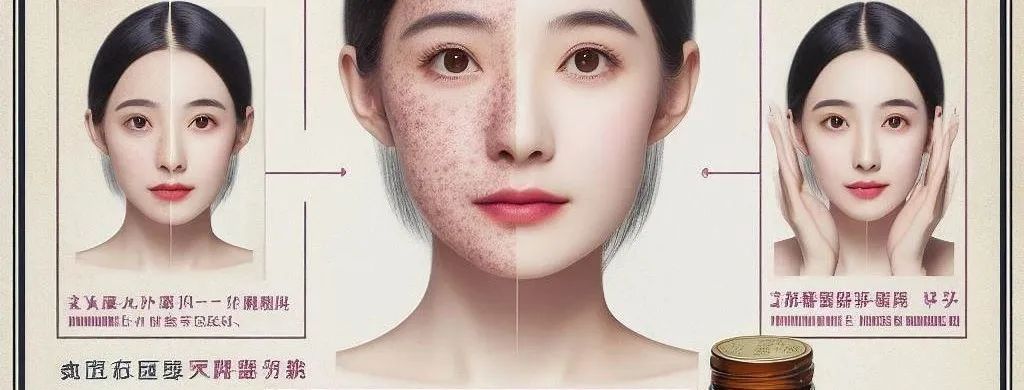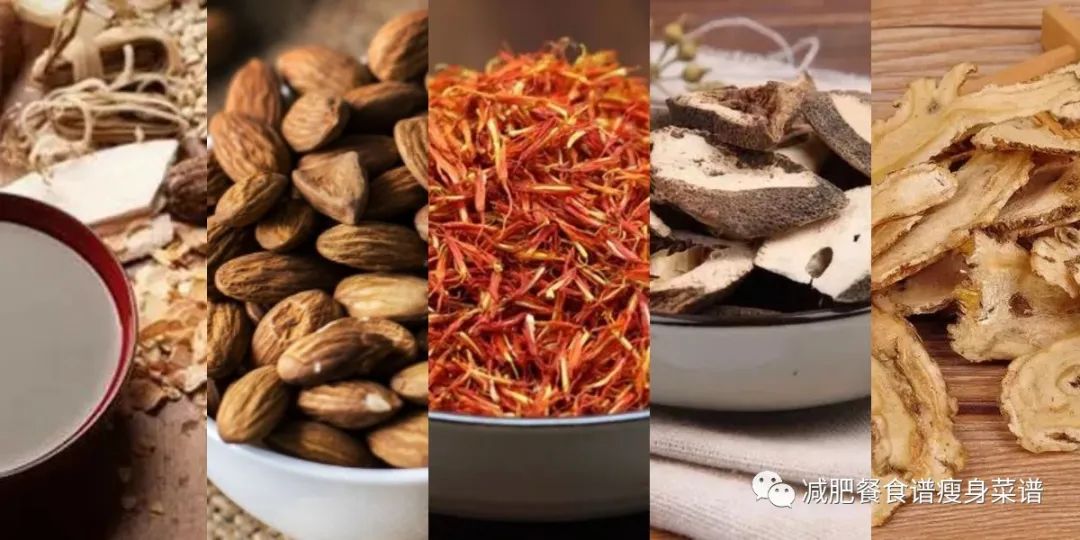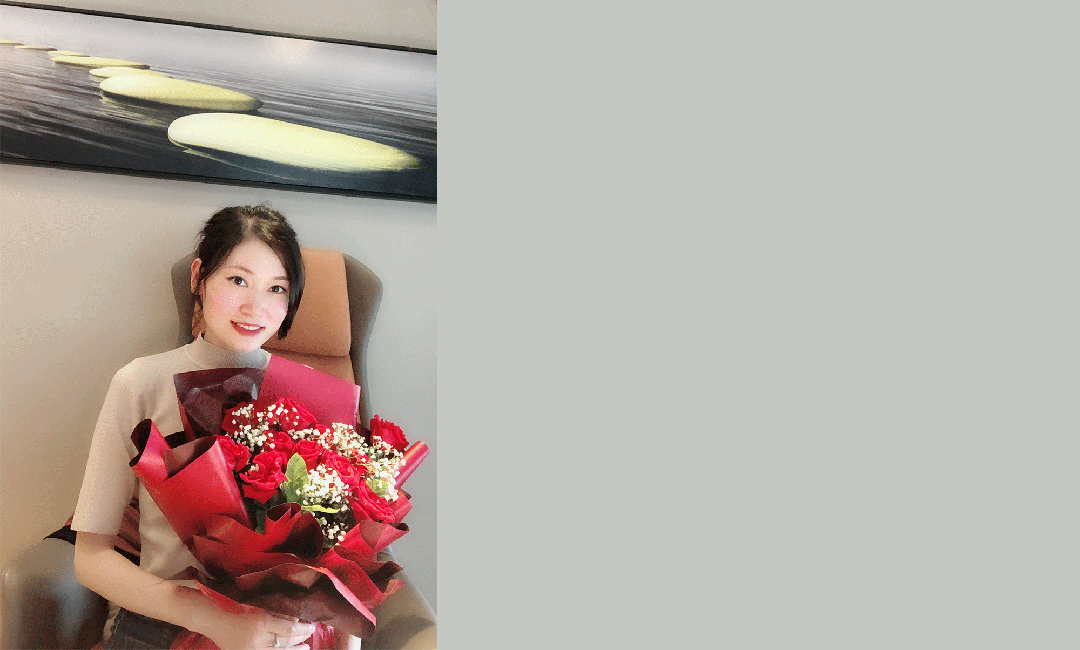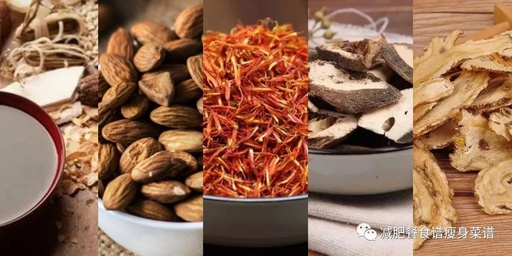
Let us begin with a real case to explore the application of Traditional Chinese Medicine (TCM) in treating facial melasma. This case was published in 1993 in the journal “New Chinese Medicine”, detailing how a woman in her thirties successfully alleviated her facial melasma through TCM treatment.
This woman, after experiencing some emotional trauma, fell into a prolonged state of low spirits, during which she noticed many spots appearing on her cheeks, with both the number and size of the spots gradually increasing. Upon seeking help from a TCM practitioner, the experienced physician diagnosed her with blood stasis (瘀血, yūxuè) and liver qi stagnation (肝气不舒, gān qì bù shū) through tongue and pulse diagnosis, believing that this was directly related to her melasma (also known as liver spots, 肝斑, gān bān).
The TCM practitioner prescribed her a formula based on the renowned Qing Dynasty physician Wang Qingren’s “Xuefu Zhuyu Decoction (血府逐瘀汤, Xuèfǔ Zhúyū Tāng)”, with slight adjustments to suit her individual constitution and symptoms. After four courses of treatment, she was pleasantly surprised to find that the spots on her face had significantly diminished.
This remarkable formula, Xuefu Zhuyu Decoction, primarily includes Peach Kernel (桃仁, Táo Rén), Safflower (红花, Hóng Huā), Red Peony Root (赤芍, Chì Sháo), and Chinese Angelica (当归, Dāng Guī), which are believed in TCM theory to have the effect of invigorating blood and dispelling stasis. Modern pharmacological studies have confirmed that the active components of these herbs improve microcirculation, promote blood flow, and possess antioxidant properties, providing scientific evidence for the effectiveness of this formula in treating melasma.

Xuefu Zhuyu Decoction is a TCM formula that invigorates blood and dispels stasis, regulates qi, and alleviates pain, primarily used to treat blood stasis syndrome in the chest, manifesting as chest pain, headaches, fixed pain, or symptoms such as hiccups, internal heat, irritability, or palpitations and insomnia. According to my research, the formula includes the following ingredients:
-
Peach Kernel 12g
-
Safflower 9g
-
Chinese Angelica 9g
-
Rehmannia Root 9g
-
Chuanxiong (Szechuan Lovage Root) 5g
-
Red Peony Root 6g
-
Chinese Achyranthes 9g
-
Platycodon Root 5g
-
Bupleurum 3g
-
Fructus Aurantii 6g
-
Licorice 3g
These herbs should be decocted in water, one dose per day, divided into two servings in the morning and evening. Specific usage and dosage should be guided by a qualified TCM practitioner.
In addition to traditional herbal formulas, there are now various forms of Xuefu Zhuyu available on the market, such as Xuefu Zhuyu Pills (血府逐瘀丸), Xuefu Zhuyu Tablets (血府逐瘀片), or Xuefu Zhuyu Capsules (血府逐瘀胶囊), providing patients with more options. However, regardless of the form chosen, it should be used under the guidance of a physician.
This case illustrates the unique diagnostic and therapeutic approach of TCM towards melasma, improving facial spots by regulating the internal flow of qi and blood, addressing the root cause. It is not merely a cosmetic treatment but a vivid representation of the unique value of TCM in the realm of modern medicine.
Facial spots are not just skin blemishes; they reflect internal health. When melasma appears on the cheeks, it often indicates poor circulation of qi and blood, leading to blood stasis. These spots typically appear dark, akin to a river that becomes murky when it cannot flow for an extended period. These seemingly superficial spots are external manifestations of internal blood stasis, which can only be fundamentally resolved through invigorating blood and dispelling stasis.
In the world of TCM herbs, Peach Kernel and Safflower are regarded as the twin stars of invigorating blood and dispelling stasis. While they both serve this purpose, their specialties differ. Peach Kernel excels at resolving tangible blood stasis, such as in fibroids or cysts, while Safflower is adept at addressing intangible blood stasis, such as bruising after injury. Together, these two herbs work synergistically to aid in the resolution of blood stasis.
Chinese Achyranthes, another remarkable herb, is divided into Chuan Niu Xi and Huai Niu Xi, with the former primarily invigorating blood and the latter nourishing the liver and kidneys. Combined with Peach Kernel, Safflower, and Red Peony Root, they form a powerful regimen for invigorating blood and dispelling stasis to address blood stasis issues.
The root cause of blood stasis often stems from qi stagnation. Among the internal organs, the liver governs the smooth flow of qi, ensuring the circulation of qi and blood. The alternative name for melasma, “liver spots,” also hints at its close relationship with the liver. Bupleurum and Fructus Aurantii are representative herbs in TCM known for their ability to resolve qi stagnation. Bupleurum gently promotes the flow of stagnant liver qi, while Fructus Aurantii vigorously pushes qi and blood circulation. Together, they enhance qi circulation, aiding in the dispelling of blood stasis and alleviating or even eliminating the troubles of melasma.
Chinese Angelica, known as the “women’s beauty herb,” not only nourishes yin and blood but also possesses blood-invigorating properties. With the promotion of abundant and smoothly circulating qi and blood, the melasma gradually fades, and the individual appears radiant, reminiscent of blooming peach blossoms, beautiful and charming. This is corroborated in Sun Simiao’s “Qianjin Yifang,” where the beautifying effects of Chinese Angelica have been cherished by women since ancient times.
Chuanxiong and Platycodon also play a role in promoting the upward movement of qi and blood, especially Chuanxiong, which can help direct qi and blood to the head and face, assisting in the elimination of melasma. The active nature of Chuanxiong makes it a valuable ally in restoring facial blood circulation.
Licorice serves as a harmonizing element, ensuring that all herbs work together seamlessly to maximize their efficacy.
When discussing melasma, we must mention that women are more prone to suffer from liver qi stagnation. Therefore, soothing the liver and regulating qi becomes a key aspect of treating melasma. Xiaoyao Wan (逍遥丸) is an excellent choice, achieving a smoothing effect on the qi level, allowing for smooth qi flow, which in turn promotes blood circulation. However, if the condition is more severe, Xiaoyao Wan may be insufficient, making the application of Xuefu Zhuyu Wan (血府逐瘀丸) crucial. It can simultaneously act on both qi and blood levels, aiding in the elimination of melasma.
For individuals with qi and blood deficiency, combining with Ba Zhen Wan (八珍丸) or Gui Pi Wan (归脾丸) may yield better therapeutic results.
The appearance of melasma is not merely a skin issue but a warning of overall health. Through the unique treatment methods of TCM, we can fundamentally address this problem, restoring beauty to women’s faces and allowing confidence to radiate from within.
Hello, I am Nutritionist Lan Dou Dou. Thank you for accompanying me in exploring the secrets of health and beauty. If you find today’s sharing helpful, please like and follow my channel. I will provide you with more dietary health secrets to strengthen your body and rejuvenate your appearance, making you look ten years younger than your peers. Together, let’s pursue a healthier and more beautiful self!🌟

-
References:
-
“New Chinese Medicine” 1993 issue, analysis of a case study on melasma and Xuefu Zhuyu Decoction.
-
Wang Qingren, “Collection of Case Studies on Xuefu Zhuyu Decoction,” a compilation of famous TCM formulas from the Qing Dynasty.
-
Zhang Yongnian, Yang Yinfang. Research progress on blood-invigorating and stasis-dispelling herbs [J]. Chinese Herbal Medicine, 2015, 46(14): 2107-2115.
-
Li Xia, Zhang Xiaoyang, Wang Haiyan, et al. Pharmacological study of Bupleurum and Fructus Aurantii on a rat depression model [J]. Journal of Chinese Medicine Information, 2011, 18(8): 34-35.

